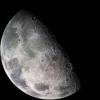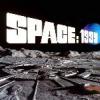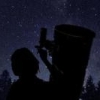If you work the numbers backwards, 0.5 mm is a practical exit pupil to call the magnification ceiling of any scope. And based on my personal tastes 3.5 mm is the shortest fl eyepiece you want to use.
These two numbers alone give you f/7 as a ratio. The magnification with a 3.5 mm ocular will be 2x the aperture of the scope in mm. A 7 mm will give you the scopes aperture as magnification.
So the ceiling of each instrument is 2x the aperture. Go beyond this and you will see stuff but views will dim.
So an 80mm peaks at 160x, a 250 mm at 500x etc.
Now consider your sky conditions. If 300x is the usual ceiling a 250 mm aperture can afford to "spend down focal ratio" (relative to f/7) and still reach 300x. A 250mm f/5 will hit 250x with a 5mm ocular and 300x with 4mm. You are in the reasonable viewing zone. You pay for it at the other end, where large exit pupils mean you cannot physically use the aperture you have paid for. Other issues arise including coma etc.
Now let's say you want a 300x view in a 100 mm telescope. That's 3x per mm of aperture. An f/5 100 mm would require a 1.3 mm eyepiece. (5mm=100x, 300x means 5/3=1.3. Constraining the aperture forces the focal ratio out, but you will never ever get to 300x and stay above a 0.5 mm exit pupil in a 100 mm scope, because the 0.5 exit pupil is an ocular one half the focal ratio, always. Your long focal ratio scopes are thus designed to exceed the organic limits of the eye with easy to use oculars, an f/15 100 mm scope will reach 300x with a 5 mm eyepiece.
The field of view is strictly a function of magnification. At 100x all scopes have the same field of view.
So we conclude your question is wrong. Field of view is determined by magnification. Magnification is determined as a ratio to aperture. If the question is what will give you 2.1 degrees and 300x at 0.5 exit pupil, you fiddle with aperture till you get where you want. A 100 mm can't do 300x at 0.5 mm exit pupil. For that you need 150mm or larger aperture. And as it happens the increased aperture is optimal for DSOs.
To get portability and wider fields reduced apertures and shorter focal ratios do the trick. But it's absurd to call a four inch f/15 instrument optimized for planets. It is optimized to offer dim views at ultra restricted exit pupils.
The notion of long focal ratios as optimized for planets is rooted in the need to control CA at high power and the difficulty in using tiny glass oculars. It has some, but less critical, basis in small Newtonian design under 150 mm where a long focal ratio can have a small secondary and more accurate mirror than say a small f/4.5. GN
Edited by gnowellsct, 25 March 2019 - 09:16 AM.



























